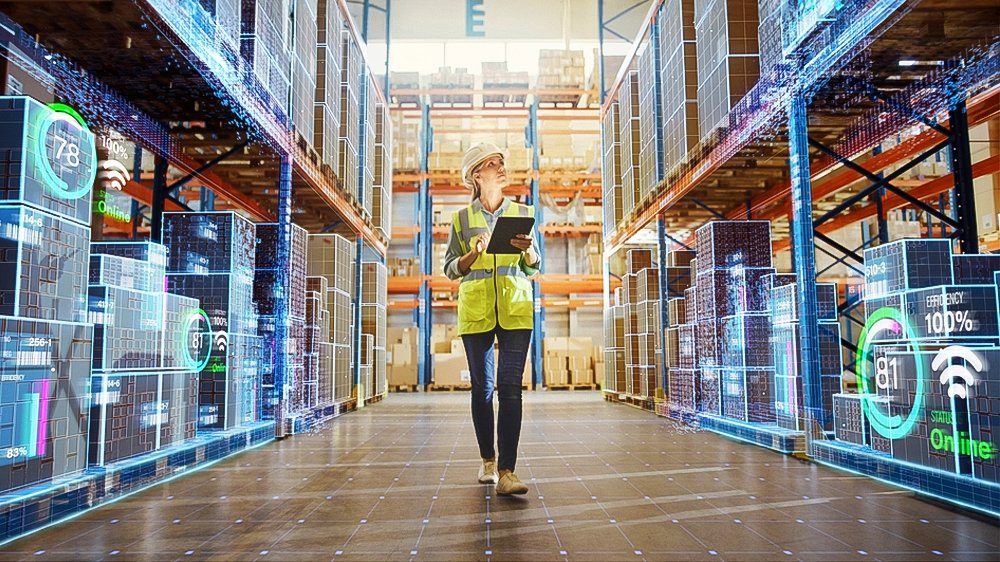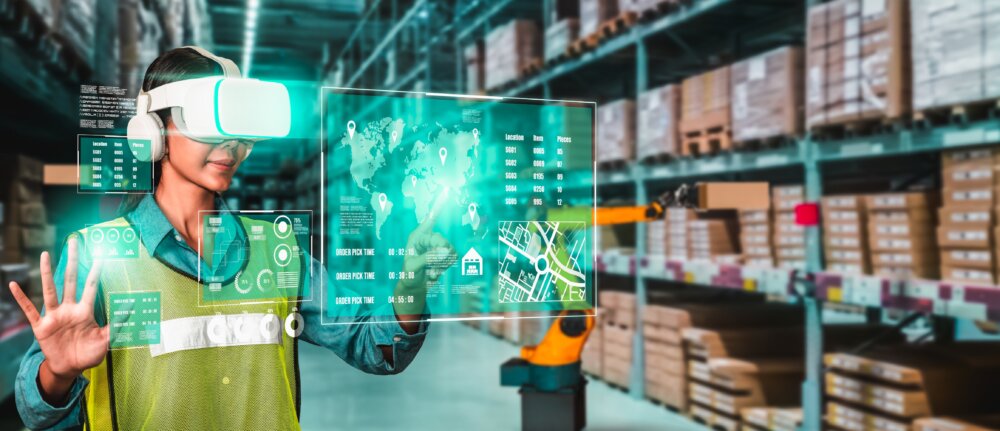
How IoT technologies change the logistics
The Internet of Things (IoT) is causing a technological revolution around the world. One of the areas where IoT has had a considerable influence is logistics. In 2019, the worldwide IoT in the logistics market was worth $34 billion. According to some estimates, the value of the sector would reach $63.7 billion by 2026, rising at a CAGR of roughly 12.4%.
Let’s start with a few current IoT applications to grasp better where the technology is heading in the functional logistics environment:
- Monitoring and tracking of shipments
Logistics businesses can track the location of products and monitor container temperature, relative humidity, and other characteristics in real time thanks to wireless technology such as radio-frequency identification (RFID) tags, eSIM, and GPS sensors. AI algorithms may use IoT technology to assess this data in order to assist with route management and security while also anticipating future difficulties, such as maintenance, in order to avoid problems from emerging.
- Inventory Management
IoT technology has the potential to automate inventory management. For example, logistics companies may attach RFID tags to items housed in warehouses so that their position and inventory levels may be tracked in real-time. Businesses may improve projections and optimize stock levels by using automatically acquired inventory data from smart shelves and IoT sensors.
- Fleet Management
With IoT-enabled fleet management, real-time vehicle location, trailer or truck weight management, vehicle current condition, and speed are all conceivable. By optimizing routes and scheduling, businesses may decrease idle time and improve fleet performance. These technologies can help save fuel costs and monitor drivers for unsafe driving patterns. IoT-powered solutions provide real-time monitoring of autos by collecting data on fuel use, engine performance, driving behavior, and maintenance requirements.
- Predictive Maintenance
IoT data from linked sensors and other IoT devices may be utilized to detect patterns, automatically predict equipment faults, and plan maintenance. By analyzing historical and real-time data, predictive analytics systems may forecast demand, enhance routing, and predict potential interruptions.
- Intelligent Logistics and Warehouse Infrastructure
IoT is critical for automating warehouse operations and using available space and resources. By using acquired analytics data, smart warehouses, and logistics facilities may improve forecasting and inventory management. IoT devices such as automated picking systems, RFID tags, and smart shelves provide real-time inventory tracking and administration. IoT sensors may also monitor environmental parameters such as temperature and humidity to ensure perishable commodities are appropriately stored and waste is kept to a minimum.

Furthermore, there are other concerns to consider while building information processes in logistics:
1. Scalability
When sensors and other linked devices were employed more often in a system, the obtained data would necessitate in-depth analysis and processing. As a result, we employ a scalable and adaptable infrastructure capable of managing rising data volumes and responding to evolving system needs.
- Security
Cyberattacks on IoT networks and devices can result in data loss as well as other issues. Organizations, on the other hand, should be able to preserve their data and avoid unauthorized access through comprehensive security evaluations and robust security protocols.
- Integration
Because of insufficient planning and testing, IoT devices or system integration with traditional logistical systems may yield substandard outcomes. Before integrating IoT with existing logistical systems, proper planning and integration testing must be performed.
- Employee Capabilities
Because IoT installation demands repeated system upgrades, employees may struggle to acclimatize to the complex changes. To swiftly adapt to the altered approach, a qualified staff with technical abilities is required. This involves employee training.
5. Data Reliable
Every aspect of logistics, including inventory management and product delivery, requires efficiency and precision. In recent years, the Internet of Things (IoT) has been a major changer, revolutionizing how logistical operations are carried out. By connecting devices and systems over the internet, IoT allows real-time data collection, analysis, and automation, enabling logistics organizations’ previously unheard-of insights and opportunities.
By connecting gadgets, automobiles, warehouses, and systems, logistics companies may simplify their operations, save costs, and increase customer satisfaction.
As technology advances, the Internet of Things (IoT) will play a larger role in logistics, enabling a more connected and effective supply chain ecosystem. Adopting IoT is now a need, not a choice, for logistics organizations hoping to thrive in the digital age.


